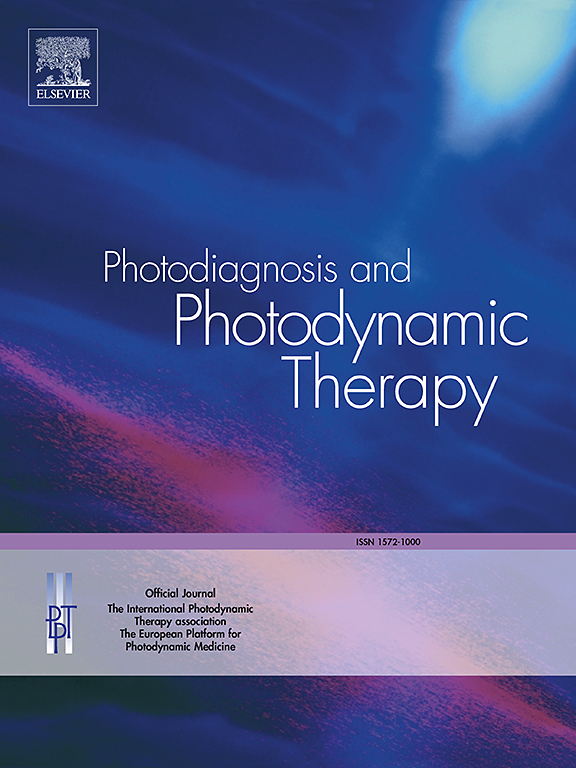结合人工神经网络算法的血浆自身荧光光谱快速诊断潜伏性和活动性肺结核。
IF 3.1
3区 医学
Q2 ONCOLOGY
引用次数: 0
摘要
现有的临床肺结核(TB)诊断方法通常存在以下一些局限性,如耗时、侵入性、放射性、灵敏度和准确性不够。本研究证明了利用血浆自身荧光光谱和人工神经网络(ANN)算法快速准确诊断健康人潜伏性和活动性肺结核的可能性。对18名健康志愿者、12名潜伏结核感染者和80名活动性结核患者的血浆荧光光谱进行了测量和分析。通过优化神经网络结构和激活函数,神经网络三分类模型的平均分类准确率达到96.3%,其中健康人、潜伏性结核感染者和活动性结核患者的分类准确率分别为100%、83.3%和97.5%,大大优于传统的主成分分析(PCA)和线性判别分析(LDA)方法的分类结果。据我们所知,这是第一次用自体荧光光谱技术区分潜伏性、活动性肺结核病例和健康样本的研究工作。作为一种快速、准确、安全、无标签、无创和低成本的技术,它可以作为早期筛查肺结核疾病的一种有前途的诊断工具。本文章由计算机程序翻译,如有差异,请以英文原文为准。

Rapid diagnosis of latent and active pulmonary tuberculosis by autofluorescence spectroscopy of blood plasma combined with artificial neural network algorithm
The existing clinical diagnostic methods of pulmonary tuberculosis (TB) usually have some of the following limitations, such as time-consuming, invasive, radioactive, insufficiently sensitive and accurate. This study demonstrates the possibility of using blood plasma autofluorescence spectroscopy and Artificial Neural Network (ANN) algorithm for the rapid and accurate diagnosis of latent and active pulmonary TB from healthy subjects. The fluorescence spectra of blood plasma from 18 healthy volunteers, 12 individuals with latent TB infections and 80 active TB patients are measured and analyzed. By optimizing the ANN structure and activation functions, the ANN three-classification model achieves average classification accuracy of 96.3 %, and the accuracy of healthy persons, latent TB infections and active TB patients are 100 %, 83.3 % and 97.5 %, respectively, which is much better than the results of traditional Principal component analysis (PCA) and Linear discriminant analysis (LDA) method. To the best of our knowledge, this is the first research work of differentiating latent, active pulmonary TB cases from healthy samples with autofluorescence spectroscopy. As a rapid, accurate, safe, label-free, non-invasive and cost-effective technique, it can be developed as a promising diagnostic tool for the screening of pulmonary TB disease in the early stage.
求助全文
通过发布文献求助,成功后即可免费获取论文全文。
去求助
来源期刊

Photodiagnosis and Photodynamic Therapy
ONCOLOGY-
CiteScore
5.80
自引率
24.20%
发文量
509
审稿时长
50 days
期刊介绍:
Photodiagnosis and Photodynamic Therapy is an international journal for the dissemination of scientific knowledge and clinical developments of Photodiagnosis and Photodynamic Therapy in all medical specialties. The journal publishes original articles, review articles, case presentations, "how-to-do-it" articles, Letters to the Editor, short communications and relevant images with short descriptions. All submitted material is subject to a strict peer-review process.
 求助内容:
求助内容: 应助结果提醒方式:
应助结果提醒方式:


